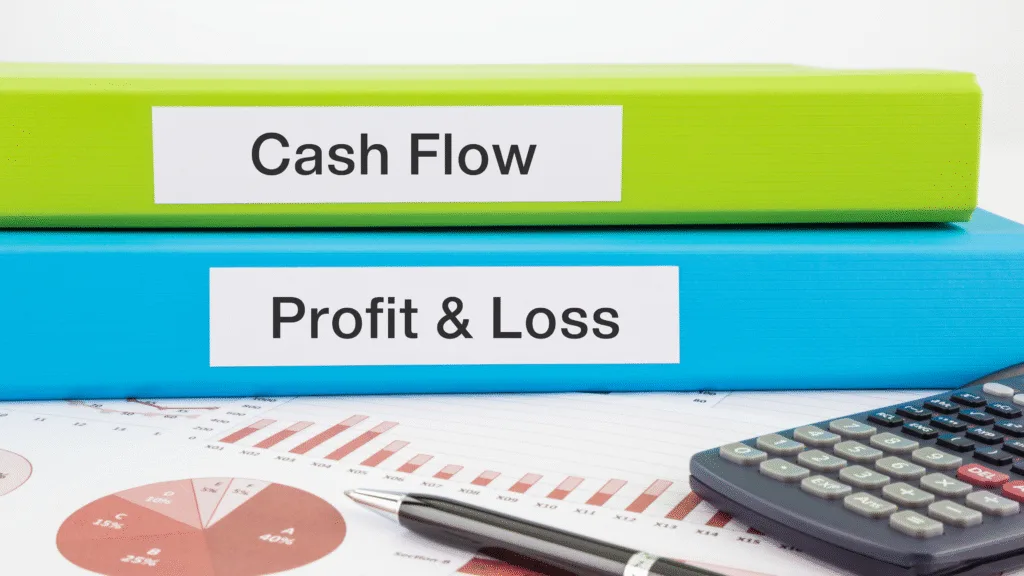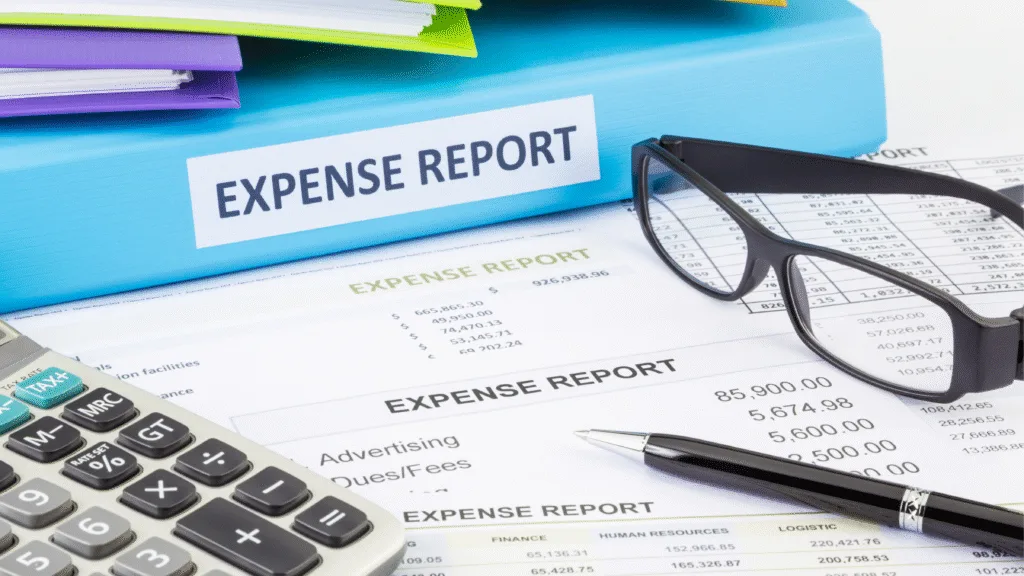Cash Flow Forecast: The Ultimate 2025 Guide for Business Success
Cash Flow Forecast
Today, businesses are often more concerned with profits than cash flow, and that’s where many stumble.
Understanding and implementing a solid cash flow forecast can be the difference between a business that thrives and one that struggles.
A cash flow forecast isn’t just a spreadsheet; it’s a strategic tool, a financial compass that steers your business clear of trouble and into prosperity.
Let’s dive into everything you need to know about building, maintaining, and mastering a cash flow forecast, with practical steps, proven techniques, and real-world insights to help you stay financially prepared at all times.
What is a Cash Flow Forecast?
A cash flow forecast is a financial projection that estimates how much money will flow in and out of your business over a specified period, weekly, monthly, quarterly, or annually.
Essentially, it helps you anticipate when cash will be available and when shortfalls might arise.
This forecast doesn’t just track actuals. It projects future movements based on current data, helping you answer crucial questions like:
- Will we have enough cash to pay salaries next month?
- Can we afford new equipment in Q3?
- Should we delay a project launch due to lean cash periods?

Why Every Business Needs a Cash Flow Forecast
Without a cash flow forecast, it’s like sailing blind in choppy waters. You may hit an iceberg of overdue bills or unpaid taxes without warning. With it, you gain:
Visibility: Know when your cash might run dry or pile up unnecessarily.
Control: Make proactive decisions to prevent overdrafts or excess idle cash.
Confidence: Build trust with investors and lenders through financial foresight.
Moreover, HMRC and lenders often expect businesses to show detailed cash flow plans before granting extensions or financing. So, even legally and operationally, it pays to forecast.

Cash Flow vs Profit, Spotting the Difference
It’s a common mistake: assuming that profit equals cash. Sadly, it doesn’t.
Profit is what’s left after deducting expenses from revenue on paper.
Cash flow is what actually moves in and out of your bank account.
You might have invoiced clients for £10,000 this month, but if none of them pay, your cash flow remains negative while your profit reports shows green.
That’s why profitable businesses can still go bankrupt.
Types of Cash Flow Forecasts
Choosing the right forecasting horizon is critical. Here’s a breakdown:
| Forecast Type | Duration | Best For |
|---|---|---|
| Short-term | 1–13 weeks | Daily operations, short-term decisions |
| Medium-term | 3–12 months | Budgeting, seasonal planning |
| Long-term | 1–5 years | Strategic planning, investment moves |
Each type serves its purpose, and in most cases, businesses use a combination to keep an eye on both short-term liquidity and long-term viability.
Tools and Templates for Cash Flow Forecasting
Forecasting doesn’t need to be complicated.
Here are some examples of tools you could start with:
Excel/Google Sheets: Ideal for customisable, manual forecasts
Accounting Software: Xero, QuickBooks, and Sage offer built-in forecasting
Dedicated Apps: Float, Fathom, and Futrli integrate with bookkeeping software for dynamic forecasts
Templates should include:
Opening bank balance
Cash inflows (e.g., sales, loans)
Cash outflows (e.g., wages, rent)
Net cash movement
Closing balance

Essential Components of a Cash Flow Forecast
Your forecast must reflect real-world complexity.
Key components include:
Receipts: From sales, VAT refunds, grants, or loans
Payments: Salaries, rent, supplier payments, taxes, subscriptions
Capital Expenditure: Machinery, vehicles, or IT investments
Financing Activities: Loan repayments or equity infusions
Break each category down as granularly as possible.
Don’t lump “expenses” together, i.e itemise them so you can identify what money is being spent on.

Step-by-Step Guide to Setting Up Your First Forecast
Set your timeline (e.g., 3 months)
Start with opening cash (last known balance)
List expected income (by week/month)
Itemise outgoings (include due dates)
Calculate net cash (income minus expenses)
Track closing balances
Review regularly and compare actuals vs forecast
Best Practices for Forecast Accuracy
Use real data: Past performance is a strong predictor.
Be conservative: Overestimate expenses, underestimate income.
Account for seasonality: December sales boom? Summer slump? Forecast accordingly.
Build a buffer: Always add a 10–15% contingency for the unknown.
Sources of Cash Inflow
Understanding inflows ensures you’re not blindsided.
These include:
Sales revenue
Loan drawdowns
Equity investments
VAT reclaims
Government grants
Royalties and licensing fees
Forecast only inflows you are reasonably certain to receive.
Don’t count your chickens before they hatch!
Forecasting Sales Revenue and Receipts
Base your projections on:
Pipeline deals with expected close dates
Payment terms (30, 60, 90 days)
Customer payment behaviour (late payers?)
Historical patterns
Use rolling averages or trend lines for better accuracy.
Timing Inflows And Why It Matters
You might invoice £50,000 in January, but if payment comes in April, your cash flow takes a hit.
Always align:
Invoice date
Payment due date
Actual expected receipt date
Include expected VAT refunds and direct debits from customers, which often form reliable inflows.
Identifying Fixed and Variable Costs
Outflows aren’t just bills, they’re patterns. Understanding these makes your forecast stronger.
Fixed costs remain steady: rent, salaries, insurance.
Variable costs fluctuate with sales volume: raw materials, commissions, and shipping.
Classifying expenses correctly helps you anticipate cash pressure during low-revenue months.

Timing Expenses and Payments
When you pay, it matters as much as what you pay. Delaying a supplier invoice by 15 days might help cover payroll. Early payment discounts? Great, but only if you have the cash.
Prioritise:
Payroll (never late)
HMRC obligations (to avoid penalties)
Utilities and operational costs
Repayments and leases
Utilise cash flow forecasting to negotiate more favourable terms with suppliers.
Dealing with Unexpected Costs
No forecast is immune to curveballs. Broken equipment. Sudden tax liabilities. Uninsured losses.
Here’s how to prepare:
Add a 10% buffer in each forecast cycle.
Maintain an emergency fund.
Categorise “unplanned spend” in your forecast and monitor trends.
Better safe than rushing to get loans or overdrafts.
Direct vs Indirect Forecasting
Two forecasting methods dominate:
Direct method: Lists every cash transaction. Ideal for short-term clarity.
Indirect method: Uses profit figures and balance sheet changes. Better for long-term planning.
Many SMEs stick with direct methods for their simplicity. Larger firms often blend both.
Using Historical Data for Projections
Your past is your biggest forecasting ally.
Review:
Monthly income fluctuations
Payment patterns
Peak sales periods
Time to collect debts
This gives you a realistic starting point, especially when launching rolling forecasts.

Seasonality and Trend Analysis
Seasonality is often the silent killer of cash flow.
If you don’t forecast for the December slowdown, January may hit like a blizzard.
Use:
Year-on-year comparisons
- Sector benchmarks
Adapt your forecast to the rhythm of your business cycle.
Cash Flow Forecasting Software Tools
Here are top options:
| Software | Best For | Features |
|---|---|---|
| Float | SMEs | Visual forecasts, Xero/QuickBooks sync |
| Fathom | Accountants and CFOs | Scenario planning, reporting |
| Futrli | Agencies and scale-ups | AI-based predictions |
| Xero & QuickBooks | All business types | Inbuilt cash forecasting |
These save time, reduce errors, and enable dynamic, real-time updates.
How Often Should You Update It?
Forecasts must evolve. At a minimum:
Weekly updates for short-term plans
Monthly updates for long-range forecasting
After key events new contracts, tax changes, major purchases
Update assumptions and refine inflow/outflow data regularly.
What to Do When Forecasts Deviate from Reality
When reality doesn’t match the forecast, don’t panic. Investigate:
Was an expense delayed or missed?
Did a customer pay early?
Was the sales dip seasonal or a warning flag?
Document deviations, learn from them, and adjust future assumptions.
Analysing Variances for Better Forecasting
Variance analysis is your feedback loop.
Break down:
Favourable variances (more cash than forecast)
Adverse variances (less cash or more spend)
Ask “why?” to refine your forecasting logic. Continuous improvement = forecasting mastery.
Making Strategic Business Decisions
Cash flow forecasts guide:
Hiring decisions
Capital expenditure planning
Marketing investment
New location launches
When you can see the future of your cash, you make smarter decisions without second-guessing.
Managing Investment Opportunities
Have surplus cash coming up? A forecast can highlight it weeks in advance.
That’s when you consider:
Equipment upgrades
Bulk buying inventory
Expanding staff
Short-term investments
Let your money work for you intelligently.
Negotiating with Lenders and Stakeholders
Banks love foresight. It builds trust and credibility.
A solid forecast shows:
Repayment capability
Risk mitigation plans
Business sustainability
Stakeholders, including board members and investors, feel reassured when shown concrete financial planning.
Improving Internal Financial Discipline
Forecasting brings discipline.
It forces you to:
Track receivables and payables proactively
Minimise unnecessary expenses
Justify every pound spent
In short, it drives a culture of financial awareness, which is priceless.

Integrating Forecasting into Business Planning
Cash flow should never sit in a silo. Sync it with:
Business plans
Marketing campaigns
Product launches
That way, forecasting becomes not just a finance tool but a strategic GPS.
Forecasting for Growth and Expansion
Growth needs funding. Cash flow forecasting helps plan:
Inventory scaling
New hires
International moves
Acquisition strategy
Forecasts can help turn ambition into action.
Scenario Planning and Sensitivity Analysis
What if:
Sales drop 30%?
Interest rates jump?
VAT rules change?
Build multiple forecast models with varied inputs. Scenario planning helps prepare for both opportunity and crisis.
Overestimating Inflows or Underestimating Costs
Don’t wear rose-tinted glasses. It’s better to be pleasantly surprised than disappointed.
Be realistic with customer payments.
Expect some cancellations.
Account for inflation and price changes.
Ignoring Market Conditions and Trends
The economy isn’t static. Consider:
Brexit-related changes
Fuel price volatility
Changes in consumer behaviour
Don’t build a forecast in a vacuum.
Failing to Revisit and Update the Forecast
A six-month-old forecast is outdated. It’s not “set and forget”. Create a rhythm:
Weekly check-ins for short-term forecasts
Monthly adjustments for long-term plans
Using Static Templates Without Customisation
Templates are great, but every business is unique.
Tweak categories
Add specific line items
Reflect your business model
A one-size-fits-all approach rarely fits anyone well.

Cash Flow Forecast
A cash flow forecast is more than a financial tool.
It’s your business’s radar system helping you avoid danger, navigate tough waters, and sail towards your goals.
Whether you’re running a local bakery or a growing tech startup, forecasting ensures you always know when to steer and when to anchor.
It’s not about predicting the future perfectly, it’s about preparing for it responsibly.
Frequently Asked Questions
What’s the main purpose of a cash flow forecast?
To predict the timing and volume of cash moving in and out of a business, ensuring you always maintain enough liquidity to meet obligations.
How often should I update my cash flow forecast?
Ideally, review weekly for short-term planning and monthly for long-term strategic decisions.
Is Excel good enough for cash flow forecasting?
Yes, especially for start-ups or SMEs. However, as complexity grows, consider specialised software like Float or Futrli.
Can a profitable business still run out of cash?
Absolutely. Profit doesn’t always mean immediate cash. Late payments and high receivables can create cash shortfalls.
What’s a rolling cash flow forecast?
It’s a forecast that extends as time progresses usually updated monthly or quarterly to always stay ahead.
Do lenders look at cash flow forecasts?
Yes. Strong, well-maintained forecasts increase your credibility and approval chances for loans or credit lines.
Conclusion
If you’re serious about your business’s future, a cash flow forecast isn’t optional, it’s essential.
It offers peace of mind, strategic advantage, and operational clarity. Financial uncertainty lurks around the corner, having foresight is not just smart it’s essential for survival and your peace of mind.






